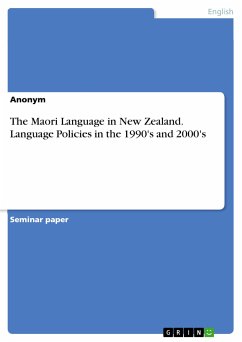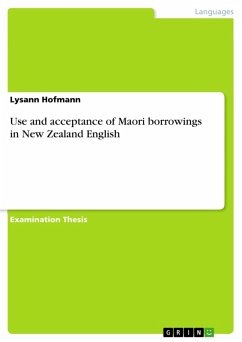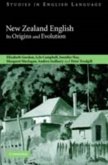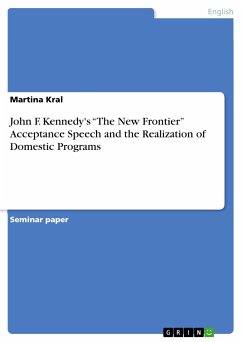Examination Thesis from the year 2006 in the subject Speech Science / Linguistics, grade: 2,0, Ernst Moritz Arndt University of Greifswald (Institut für Anglistik/Amerikanistik), language: English, abstract: New Zealand English is the variety of English that is spoken by the roughly 4 million inhabitants of New Zealand – a South Pacific state which consists of two main islands simply called the North and the South Island. New Zealand is a bicultural country with both English and Māori being its official languages. Since the British colonisation of the young state in 1840, these two languages have been coexisting side by side and, in consequence, have influenced each other. One result of this long-standing and intensive language contact is the incorporation of Māori loans into New Zealand English (NZE), which distinguishes it most distinctly from other national standards, as no other variety of English shares this feature with NZE. Thus, the use and acceptance of Māori borrowings in NZE will be the main subject of this paper. In the first part of this paper, the position of NZE among other national varieties of English will be discussed. This will be followed by a closer examination of the languages that have participated in the process of borrowing in NZ. Since borrowing is a phenomenon resulting from language contact, the third chapter will give an overview about the extra- and intralinguistic factors that form the frame for the process of borrowing. On the background of those conditions the use and acceptance of Māori borrowings in NZE will then be comprehensively discussed. There are remarkable differences in the process of lexical transfer as well as in the use of the Māori loanwords at different stages in New Zealand’s history. Therefore, the history of English borrowing from Māori will be examined according to these stages in the fourth part. Following this, the present use of these loans will be investigated by the data deriving from a pilot study which was carried out in 2005/2006 and is based on a sample of 40 subjects living in New Zealand. The findings of this study will then be compared to a German control group to determine to which extent Māori loans have gained some international currency. It is my hope to contribute to the previous research on Māori borrowings in New Zealand English by giving a comprehensive account of both the history as well as the current state of the use and acceptance of these borrowings in the English spoken in New Zealand.









